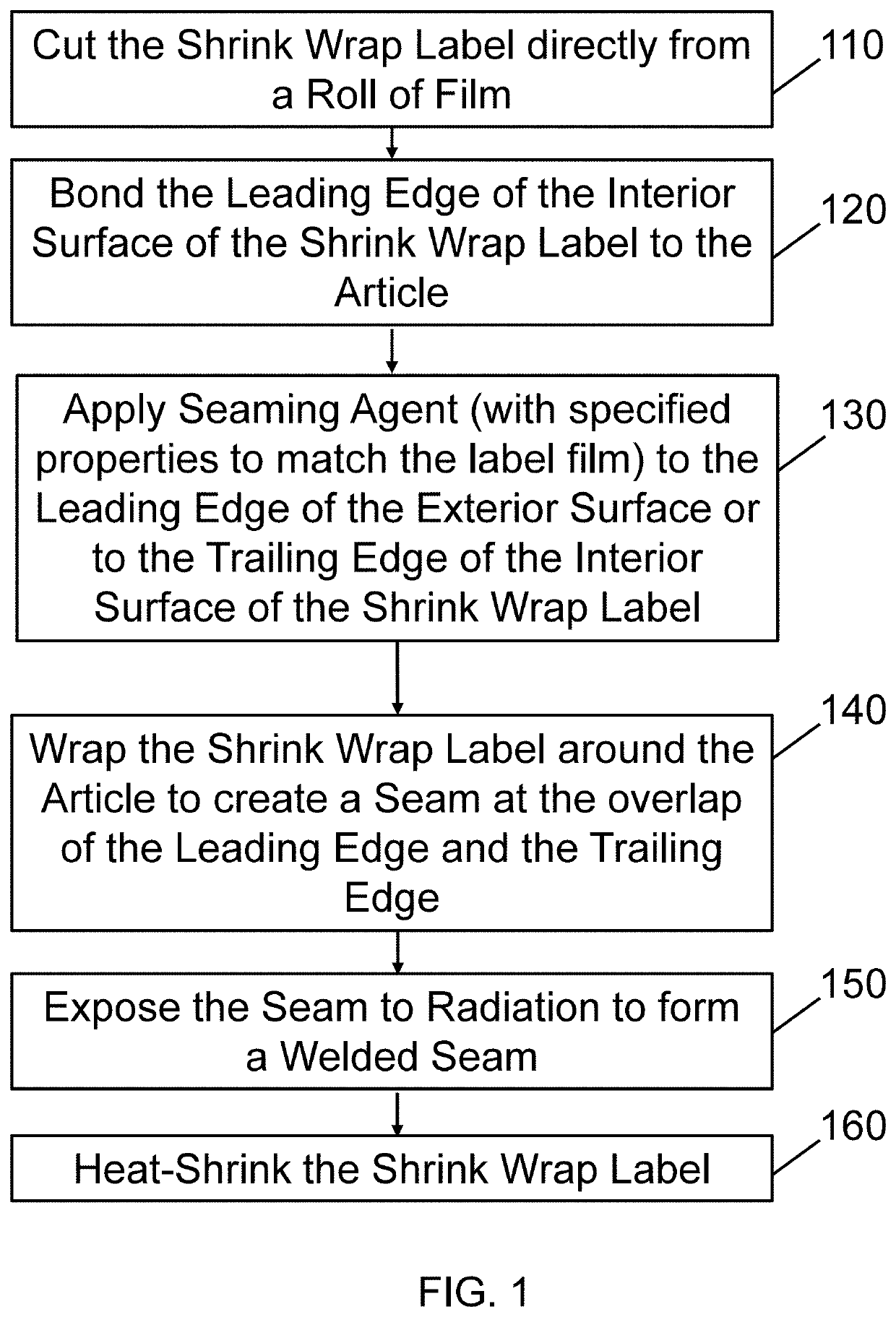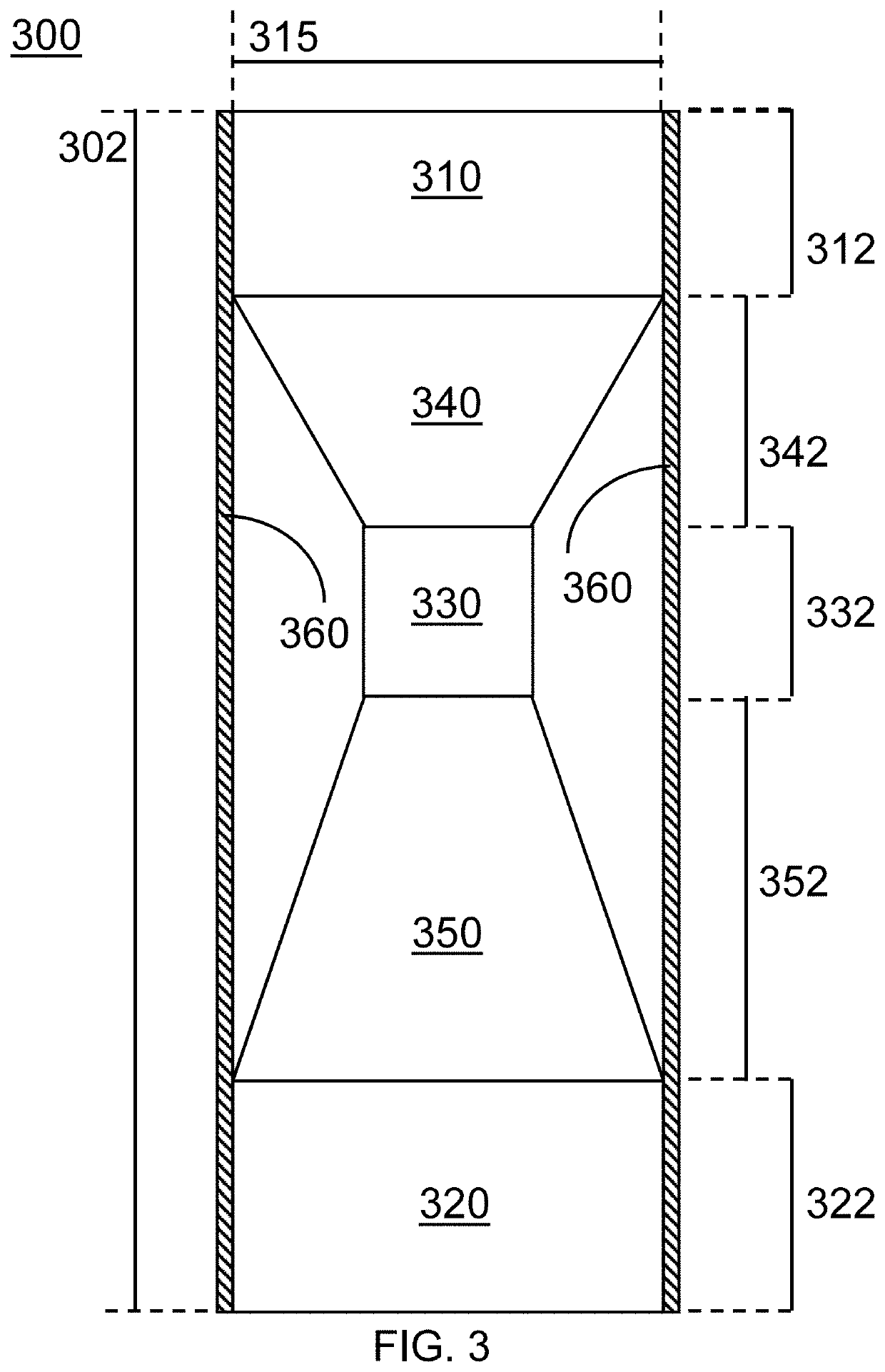Shrink wrap labels for shaped articles
a wrap label and shaped technology, applied in the field of shaped wrap labels for shaped articles, can solve the problems of shrinkage of the sleeves and tightly fitting into the container, and achieve the effects of reducing capital costs, improving safety, and increasing speed
- Summary
- Abstract
- Description
- Claims
- Application Information
AI Technical Summary
Benefits of technology
Problems solved by technology
Method used
Image
Examples
example 1
[0179]FIGS. 5-11 are pictures / photographs illustrating a test of the methods of the present disclosure. A high shrink wrap label is wrapped around a mandrel to simulate the methods.
[0180]FIG. 5 is a first picture of the test. The label is placed on a vacuum plate. The vacuum plate simulates the vacuum drum on a roll fed machine.
[0181]FIG. 6 is a second picture of the test. The label is picked by the vacuum plate.
[0182]FIG. 7 is a third picture of the test. Seaming agent is applied on trailing edge by 6 mm wide brush, calibrated to apply 0.2-2 mg seaming agent per square centimeter seam.
[0183]FIG. 8 is a fourth picture of the test, showing a curved mandrel pressed against the leading edge of the label, simulating the ramp on the vacuum drum pressing the pick-up glue on the roll fed machine. (The mandrel is as illustrated in FIG. 3.) The curved mandrel simulates a curved container. The dimensions of this mandrel (total height of 260 mm, portion of height being unsupported is 170 mm), ...
example 2
[0188]Eight different seaming agents E1-E8 were tested for their ability to weld different materials, and for their immediate welding strength, as well as to provide a seam with a seam quality of at least 2 after heat shrinkage at 0-60% shrinkage. They were made with varying amounts of MIRAMER M200, MIRAMER M600, MIRAMER M3130, tetrahydrofurfuryl acrylate (THFA), isobornyl acrylate (IBOA), and GENOMER 6043 / M22 (a blend of monomer and saturated polyester blend of oligomers and polymers).
[0189]MIRAMER M200 is a semi-polar difunctional monomer (Hexanediol diacrylate) manufactured by Rahn with very low viscosity (6-12 cPs at 23° C. and low molecular weight of 226 Da). MIRAMER M200 has good compatibility with PVC and PS, is partially compatible with PETG, and is incompatible with COC.
[0190]MIRAMER M600 manufactured by Rahn is a semi-polar hexafunctional oligomer (dipentaerythritol hexaacrylate) with high viscosity (4000-7000 cPs at 23° C.) and molecular weight of 578 Da. It is useful for...
example 3
[0228]Example 2 compared different seaming agents at the same delta time period (0.2 seconds) in an immediate welding strength test. In this Example, different delta time periods were tested. Generally, the shorter the delta time period, the less time there is for monomer and solvents to swell the label and establish cohesion between the leading and trailing edges.
[0229]Accordingly, the immediate welding strength test described in Example 2 was performed with strips made of Polyphane FIT ST, and using seaming agent E2 and the maximum load was measured for different delta times t1. The results are shown in Table 3 below.
[0230]
TABLE 3Time (sec)Maximal load (g)0.0440.0650.0850.160.260.56
[0231]It is important to note, that when a seaming agent is compatible with the label film, the seam develops immediate welding strength within a period as short as 0.04 seconds, which is much faster than what is needed for the fastest current production lines.
PUM
| Property | Measurement | Unit |
|---|---|---|
| temperature | aaaaa | aaaaa |
| viscosity | aaaaa | aaaaa |
| wt % | aaaaa | aaaaa |
Abstract
Description
Claims
Application Information
 Login to View More
Login to View More - R&D
- Intellectual Property
- Life Sciences
- Materials
- Tech Scout
- Unparalleled Data Quality
- Higher Quality Content
- 60% Fewer Hallucinations
Browse by: Latest US Patents, China's latest patents, Technical Efficacy Thesaurus, Application Domain, Technology Topic, Popular Technical Reports.
© 2025 PatSnap. All rights reserved.Legal|Privacy policy|Modern Slavery Act Transparency Statement|Sitemap|About US| Contact US: help@patsnap.com



